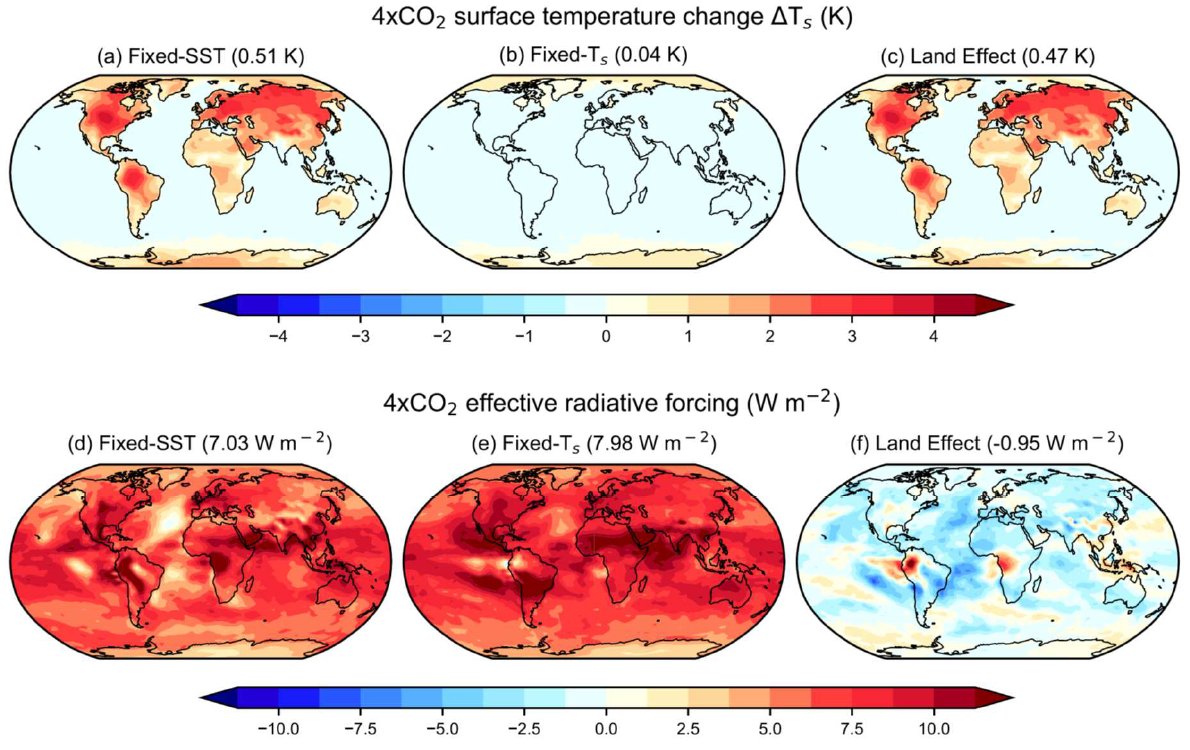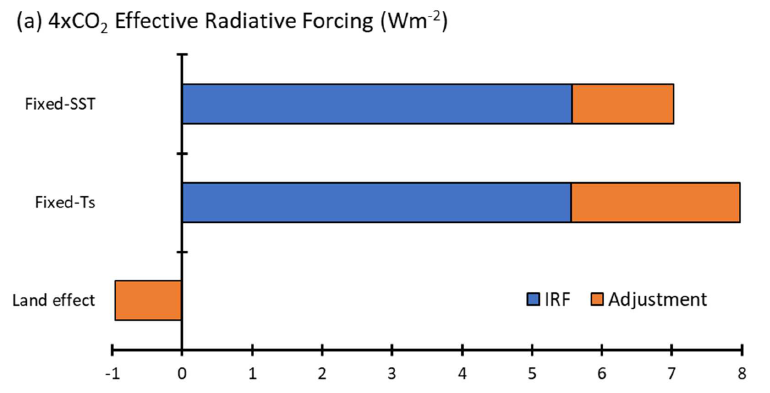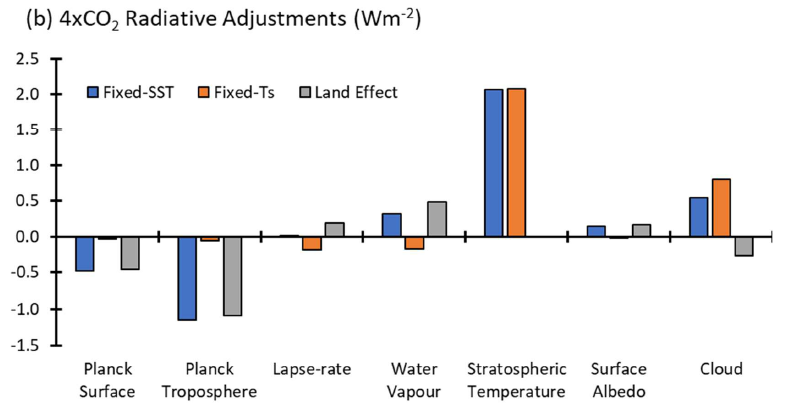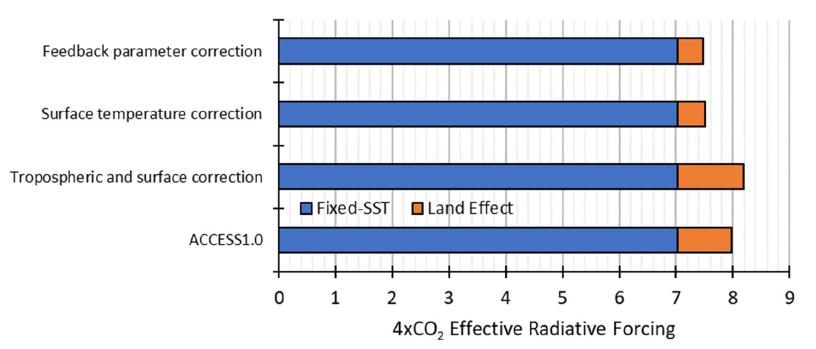We have a new paper accepted - “Effective radiative forcing in a GCM with fixed surface temperatures” incl @chrisroadmap @piersforster @gunnarmy ... https://doi.org/10.1029/2020JD033880
Or #OpenAccess here https://www.essoar.org/doi/10.1002/essoar.10504260.2
What's it about? A little bit niche but I’ll try to explain:
Or #OpenAccess here https://www.essoar.org/doi/10.1002/essoar.10504260.2
What's it about? A little bit niche but I’ll try to explain:
1. Radiative forcing (RF) is a fundamental concept for understanding climate change. It measures how hard a climate driver (whether it be greenhouse gases, aerosols, volcanoes…) 'kicks' the system, and so allows us to compare and rank the causes of past and future climate change
2. RF is quantified in terms of how much a climate driver alters the Earth's energy balance. Various definitions have emerged but the most widely adopted is what we now call Effective Radiative Forcing (ERF) (see this Ramaswamy etal epic https://doi.org/10.1175/AMSMONOGRAPHS-D-19-0001.1 for an overview)
3. ERF is typically calculated in a climate model with ‘fixed’ (i.e. constant) sea-surface-temperatures (SSTs) (see https://doi.org/10.1002/2016JD025320). By holding back SSTs in the model we inhibit surface temperature driven feedbacks that would otherwise contaminate the ERF calculation.
4. Ideally we would hold land temperatures constant too, but this has proven technically challenging to implement in a complex climate model and so a small land surface temperature change and associated climate feedbacks (clouds, water-vapour etc.) can arise in ERF calculations
5. This issue isn’t new, it has long been known and is discussed in the pioneering ERF papers (Shine etal https://doi.org/10.1029/2003GL018141; Hansen etal https://doi.org/10.1029/2005JD005776). It has long bothered me too, what *is* the impact of land temperature change in these ERF calculations?
6. Nearly 20 years later we have finally been able to address this issue by calculating an ERF in a complex climate model (ACCESS1.0) with fixed land temperatures & SSTs, thanks to the fantastic Prescribed Land AMIP simulations by Duncan Ackereley et al. https://doi.org/10.5194/gmd-11-3865-2018
7. So what’s the score? It turns out it makes a big difference (at least in this climate model). We find that in a typical fixed-SST ERF experiment the 4xCO2 ERF is 7.0 Wm-2, but this increases to 8.0 Wm-2 when we fixed land temperatures as well as SST!
8. Land warming in the commonly used fixed-SST ERF experimental design therefore reduces the ERF (by ~1.0 Wm-2 for 4xCO2). This arises because land surface temperature change warms the atmosphere, reduces land snow-cover and albedo, increases water-vapour and ….
9. … drives large-scale land-sea circulation & stability changes such as a shift in deep convection from ocean to land. This reduces cloudiness over land whilst increasing lower tropospheric stability over the oceans and low-level marine cloudiness.
10. Some methods have previously been proposed to account for land warming effects in fixed-SST ERF experiments. We test them and found none were able to robustly predict the land warming effect across all our ERFs globally or spatially, though some are better than others.
11. The biosphere plays a role too. We quantified a large ‘CO2 stomatal effect’ (representing a reduced stomatal opening in plant’s leaves in response to elevated CO2) on the land warming effect and ERF in this model – though this is likely model dependent.
12. Call to arms: the quantification of the land warming effect will likely depend on model physics. We need other modelling centres perform similar experiments in an attempt to quantify this structural uncertainty and potentially bound the issue.
13. A final parting thought for the deep thinkers: by holding surface temperatures fixed *everywhere* we have provided one definition of an ERF with zero global-mean dT that would satisfy the classical forcing-feedback paradigm. However such a state is not uniquely defined….
14. … Indeed the commonly used Gregory method https://doi.org/10.1029/2003GL018747 also provides an ERF with zero global-mean dT, but without constraint on *local* dT. The fixed-SST & Gregory-type regression approaches are in principle & practice different (see https://doi.org/10.1175/JCLI-D-14-00545.1). END

 Read on Twitter
Read on Twitter






